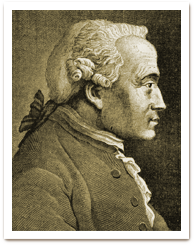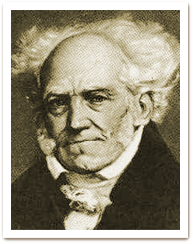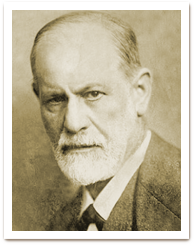Cultural Origins

Some Recent Western Thought
Any valuable taxonomy of the uniquely human elements in endeavours, like THEE, cannot spring from a vacuum. Such a discovery, if it is of value, is founded and grounded on a long history of supporting discoveries. This enabling context emerges within a particular culture from a growth of thought and understanding. Progress is generated by controversial debates and new challenges, which invigorate and stimulate creative minds.
Modern ideas about knowledge in the West have stemmed from philosophers and thinkers of the 18th century Age of Enlightenment. Prominent, even pre-eminent in explaining how we perceive and reason, was Immanuel Kant![]() (1724–1804).
(1724–1804).
Arthur Schopenhauer
![]() (1788–1860) admired Kant, but he challenged Kant's view that we could know nothing for certain. What did Kant mean by that? And why don't we hear more about Schopenhauer?
(1788–1860) admired Kant, but he challenged Kant's view that we could know nothing for certain. What did Kant mean by that? And why don't we hear more about Schopenhauer?

Kant argued that everything we knew about the world was distorted unknowingly by our perceptions and our concepts. We could not really grasp or see the «thing-in-itself». Kant, as you may know, was the precursor of the conventional wisdom of modern science with its focus on hypothesis-testing and falsification as the way knowledge develops: not «a way», but «the only proper way». Kant not only made certainty impossible, he also made uncertainty acceptable. Philosophers who agree with him, like Karl Popper, view certainty as dangerous and even totalitarian.
Schopenhauer disagreed with Kant. He noticed something that Kant missed. He saw very clearly that we do know for certain about at least one thing: our body. We know about our experiences, about our emotions, about our sexual drives, about our thoughts and wishes, about our feelings, about our dreams, about gratification and about suffering. He noticed, of course, that many of these essentially bodily phenomena were not attended to or were distorted or were deeply unconscious.

This rather convincing argument—or rather this self-evident discovery—that inner perception can lead to certainty in a way that reasoned conceptualization and observation never can—paved the way for Sigmund Freud![]() . Freud proceeded to systematize, professionalize and monetize a purely philosophical discovery as a technique of personal therapy. Freud called it psychoanalysis. His approach to emotional distress disseminated through the psychiatric-psychological mainstream as numerous variants of psychodynamic therapy. But psychoanalysis did far more than that. Its ideas penetrated deeply into the consciousness of the West, such that notions like psychological defence, inner conflict, ambivalence, non-verbal communication, mental traumatization, the influence of early experiences and much more, are now taken for granted in everyday life.
. Freud proceeded to systematize, professionalize and monetize a purely philosophical discovery as a technique of personal therapy. Freud called it psychoanalysis. His approach to emotional distress disseminated through the psychiatric-psychological mainstream as numerous variants of psychodynamic therapy. But psychoanalysis did far more than that. Its ideas penetrated deeply into the consciousness of the West, such that notions like psychological defence, inner conflict, ambivalence, non-verbal communication, mental traumatization, the influence of early experiences and much more, are now taken for granted in everyday life.
Even if psychotherapy were to disappear tomorrow under a ban by rigid and blind critics of psychoanalysis, many of Freud's ideas would stay with us as long as we remain reflective human beings. His legacy consists of his remarkable discoveries and his many perceptive observations, not theoretical speculations which underwent many changes during his life-time and afterwards.
A Different Sort of Reality
Let us turn now to what I propose is Freud's most profound discovery.
Freud used a professional setting to do what no-one had done before anywhere with the same diligence and persistence. He treated people daily for months and years, and took for granted that whatever the person reported thinking, feeling and dreaming was real. He worked with those reports on that basis, patients accepted it naturally, and he then went on to systematize what he found as best he could.
These very «real» phenomena came to be labeled «psychic reality», which was contrasted sharply to everyday «external reality». Every psychodynamic therapist is confronted again and again with the extraordinary concreteness and power of the psychic reality of their patients.
This psychoanalytic discovery, developing and elaborating over almost a century, and seeping into the way we all now think about our selves and our mind, was the essential precursor for THEE. But, just as modern science has shown that the unconscious is far broader than Freud conceived, so THEE too goes significantly further.
Psychic reality now becomes expanded to psychosocial reality. The unconscious is no longer simply the id filled with blind urges and energized via a «life force» which ensures the continuation of the species—much as Schopenhauer himself described. Such an id makes life a misery—and Schopenhauer certainly thought life was a misery and happiness an illusion, while Freud was rather pessimistic as well.
The shift in studying THEE requires us to regard our unconscious as filled, perhaps in the largest part, with the creative power and structures of the will. The power of creation is simply not comprehensible within a framework constructed out of blind drives for sex, aggression and dependency. These drives generate pain, frustration and meaningless cycles of desire-cum-satiation, as both Schopenhauer and Freud insisted. No: we are dealing with something different—not the blind will, but a .
Yes: the blind will does still persist amidst the , often causing us distress and leading us into foolishness. But an important challenge to the creative will is to deal with the body and its instinctual urges, cravings, pain, urges for conquest and domination, cruel tendencies and moral temptations. Sublimation exists, of course, but it is simply the tiniest tip of the most gigantic iceberg which helps us live and live well, relate and relate well, work and work well. How we live, relate and work—whether we act for good or for ill—is up to us. Or rather it is up to the way we allow our creative will to function.
Schopenhauer's life supports this thesis. He was somewhat anxious, unrecognized until a few years before his death, isolated and depressive: but he never succumbed to despair nor gave up, despite his anger, pessimism and misery. His creative power and his joy in creation sustained him.
Human beings have evolved THEE. It is the quintessence of our humanity. It is our creativity and reflects our frailty. The time has now come to recognize this, that is to say to recognize ourselves. We must use THEE, that is to say use ourselves. Preferably mostly for good rather than ill, and most effectively by taking a critical rational and reflective approach to the worlds that we create together.
It is now evident that THEE is part of a broader social movement that I refer to as the 21st Century Enlightenment. This emergent way of thinking and living complements the achievements of the 18th Century Enlightenment. It adds the challenge to use our natural awareness to the earlier challenge to use our natural intelligence. It demands that each of us should recognize our unavoidable responsibilities as well as affirm our inalienable freedoms.
Awareness of the psychosocial realm is not new. Just the opposite: it has been the primary focus of philosophers and religious leaders for millennia. A surge of growth in awareness, known as the Axial age ![]() , developed all around the world between 800 BCE and 200 CE.
, developed all around the world between 800 BCE and 200 CE.
People have always had difficulty in distinguishing physical reality from their imagination. We populate the world with our fears and wishes, superstitions and stories, demons and gods. Simple statements of fact about the physical world led to burning at the stake only a few centuries ago.
Disentangling the two realms has always been difficult and still is.
I do not suggest that all thinkers saw matters identically, but making a distinction has been widely regarded as useful and necessary.![]() Details
Details
In modern times, Immanuel Kant effectively banished ethics from science i.e. science in the sense of investigation of the impersonal empirical world. Nevertheless it is possible to investigate the subjective or psychosocial world and find regularities akin to the laws of natural science. These regularities necessarily lie in Kant's realm of ethics.
THEE is the result. It has been built on the work of many thinkers through the ages, including the leading social scientists and humanists of the first Enlightenment, and of the 19th and 20th centuries. Its most immediate philosophical precursor is Wittgenstein with his penetrating insight into the nature of language.
Originally posted: July 2009; Last amended: 7-Oct-2016